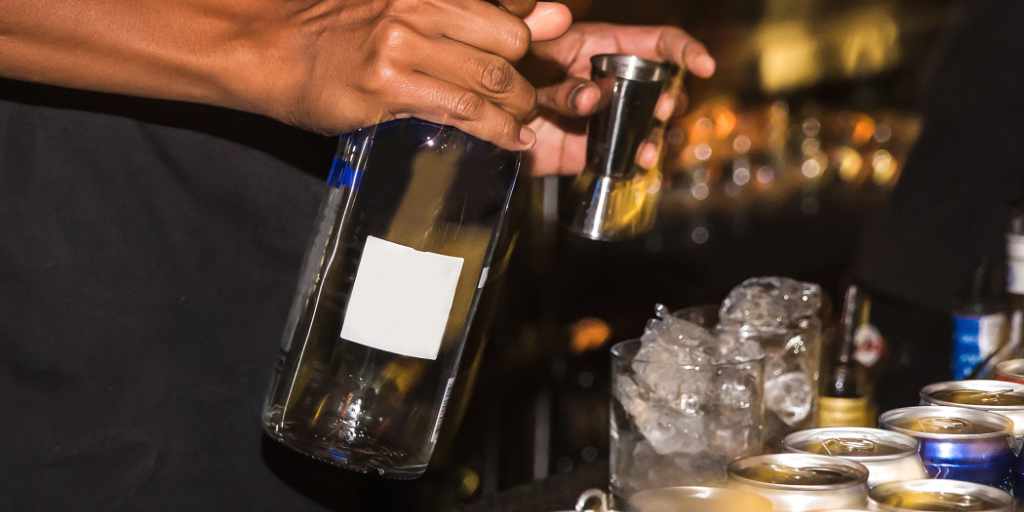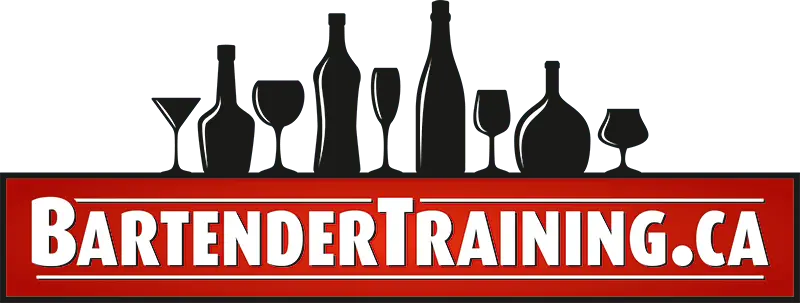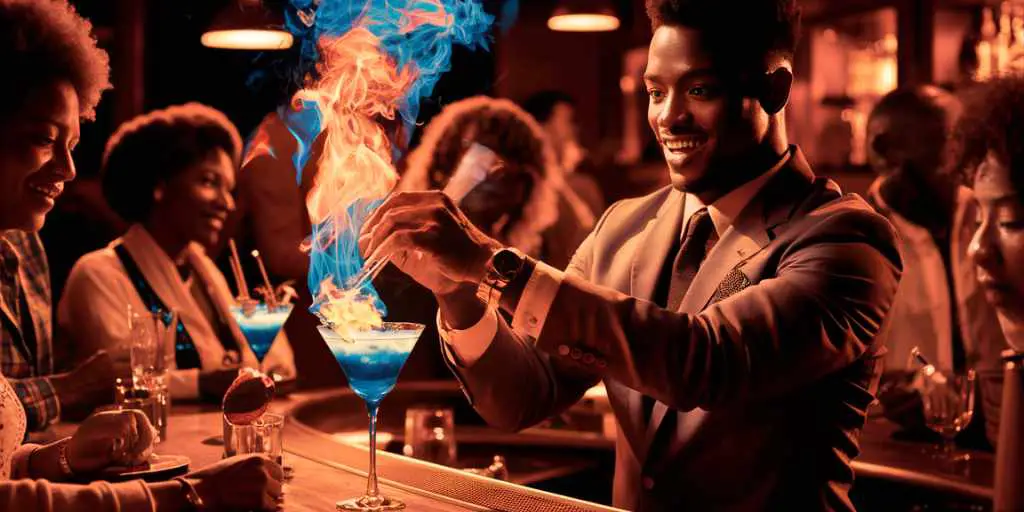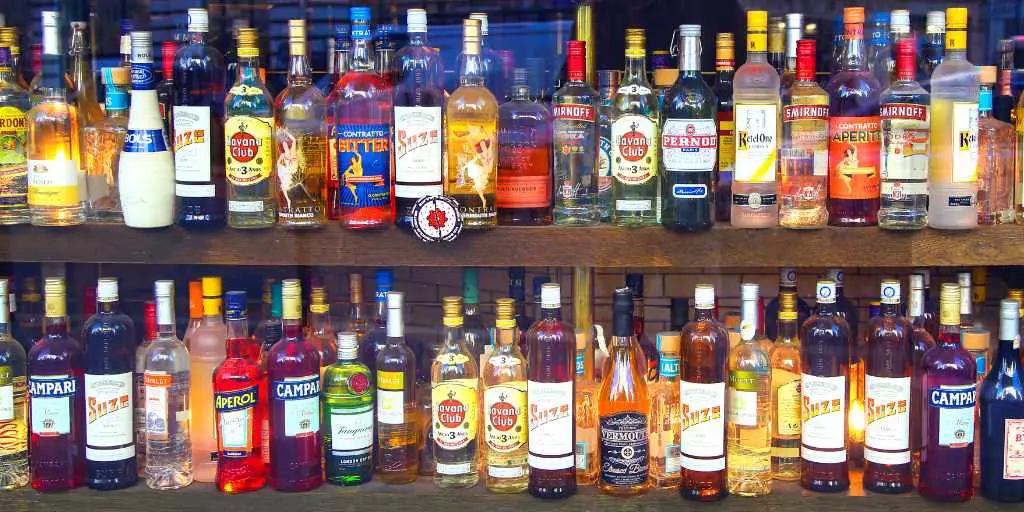Take a deep dive into the diverse realm of cocktails with us as we unravel the story behind types of rail drinks. Known for their affordability and variety, these beverages have stood the test of time and are a staple in bars across the globe.
Understanding Rail Drinks: The Basics
So, what exactly are rail drinks? Well, in the simplest terms, rail drinks are mixed alcoholic beverages made from liquors kept within the bartender’s easy reach in the speed rack or “rail” located beneath the bar. These are typically lower-cost, less premium brands than top-shelf liquors, hence often referred to as “well” drinks.
The Origins of Rail Drinks
Rail drinks have a rich and diverse history, rooted in the very beginnings of the cocktail culture. The term “rail” came from the physical bar rail on which customers would rest their feet. Over time, as the popularity of cocktails grew, so did the practice of keeping frequently used, affordable liquors in an accessible area, conveniently referred to as the rail.
The Anatomy of a Rail Drink
Rail drinks, also known as “well drinks,” are a fundamental element in the bustling world of bartending. Known for their affordability and simplicity, these beverages have earned their spot as the workhorse of any good bar. But what exactly constitutes a rail drink? Let’s delve into their anatomy.
The Name
The term “rail drink” comes from the physical location of the liquor used to make them. Bars typically store their most frequently used, and often less expensive, liquors on a ‘speed rail’ or ‘well’ for quick access. This convenient location, usually right in front of the bartender, is where rail drinks get their name.
The Liquor
The heart of any rail drink is the liquor. The selection usually includes vodka, rum, gin, tequila, whiskey, and possibly a generic brandy or scotch, depending on the bar. These are the base spirits that give each cocktail its primary flavour. It’s important to note that rail liquors are usually not top-shelf or premium brands but rather lower-cost alternatives that still provide a robust flavour.
The Mixer
Rail drinks come to life when the liquor is combined with one or more mixers. The common mixers include soda water, tonic water, cola, ginger ale, lemon-lime soda, and various fruit juices like cranberry, orange, and pineapple. Depending on the customer’s preference and the type of cocktail being made, bartenders may also add other mixers like cream, grenadine, or sour mix.
The Proportions
The anatomy of a rail drink also includes its proportions. Most rail drinks follow the classic cocktail proportion of 1:2, which is one part liquor to two parts mixer. However, this can vary based on the specific drink or the customer’s preferences.
The Garnish
Last but not least, garnishes add the final touch to rail drinks. They not only make the drink more visually appealing but can also enhance the flavour. Common garnishes include lime wedges, lemon slices, cherries, olives, or even a stick of celery, in the case of a Bloody Mary.
Popular Types of Rail Drinks
When you’re at a bar, it can be overwhelming to decide what to order, especially when faced with a myriad of choices. However, if you’re looking for a simple, classic cocktail that won’t burn a hole in your pocket, rail drinks are your best bet. Below, we’ll explore some of the most popular types of rail drinks commonly ordered in bars worldwide.
Vodka Soda
This refreshing drink is a simple mix of vodka and soda water. Typically served in a highball glass, it’s garnished with a lime wedge for that extra touch of zest. The vodka soda is a popular choice due to its light, refreshing taste and lower calorie content.
Sample Recipe:
- 2 oz of vodka
- Soda water to fill the glass
- Lime wedge for garnish
Fill a highball glass with ice. Add the vodka, then top it up with soda water. Give it a quick stir and garnish with a lime wedge.
Rum and Coke
Also known as a Cuba Libre (when a lime wedge is added), the Rum and Coke is an uncomplicated yet flavorful drink. As the name implies, it’s just a combination of rum and cola, typically garnished with a lime wedge. This drink is a staple in almost every bar around the world.
Sample Recipe:
- 2 oz of rum
- Cola to fill the glass
- Lime wedge for garnish
Fill a highball glass with ice. Pour in the rum, then fill the rest of the glass with cola. Stir gently and garnish with a lime wedge.
Gin and Tonic
Another classic cocktail, the gin and tonic, is simple and invigorating. It combines gin with tonic water and is typically garnished with a lime or lemon wedge. The botanical flavours of gin blend harmoniously with the bitter-sweet taste of tonic, making it a popular choice for many.
Sample Recipe:
- 2 oz of gin
- Tonic water to fill the glass
- Lime or lemon wedge for garnish
Fill a highball glass with ice. Add the gin, then top with tonic water. Stir gently and garnish with a lime or lemon wedge.
Moscow Mule
The Moscow Mule is a refreshing cocktail typically served in a copper mug, keeping the drink cool. The drink blends vodka, ginger beer, and lime juice, garnished with a lime slice and mint leaves. Its perfect balance of spicy ginger beer and tart lime juice has contributed to its rising popularity in recent years.
Sample Recipe:
- 2 oz of vodka
- 1/2 oz of lime juice
- Ginger beer to fill the mug
- Lime slice and mint leaves for garnish
Fill a copper mug with ice. Add the vodka and lime juice, then fill the mug with ginger beer. Stir gently and garnish with a lime slice and mint leaves.
Whiskey Sour
The whiskey sour is a crowd-pleaser, combining the warmth of whiskey with the tartness of lemon juice and a hint of sweetness from the simple syrup. Often garnished with a cherry and an orange slice, this cocktail is a delight to the eyes and the palate.
Sample Recipe:
- 2 oz of whiskey
- 1 oz of lemon juice
- 1 oz of simple syrup
- Cherry and orange slice for garnish
Add the whiskey, lemon juice, and simple syrup into a shaker with ice. Shake (or stir?) until well-chilled, then strain into a rocks glass filled with ice. Garnish with a cherry and an orange slice.
Margarita
While the classic Margarita is usually a call drink with tequila, triple sec, and lime juice, many bars offer a rail version. The rail Margarita is typically made with a cheaper tequila and might use a pre-made sour mix instead of fresh lime juice and triple sec.
Sample Recipe:
- 2 oz of tequila
- 1 oz of lime juice
- 1 oz of sour mix
- Lime wheel for garnish
Pour the tequila, lime juice, and sour mix into a shaker filled with ice. Shake well, then strain into a rocks glass filled with ice. Garnish with a lime wheel.
Rail Drinks vs Premium and Call Drinks
When navigating a bar menu, you’ll likely come across the terms rail drinks, premium drinks, and call drinks. While they all refer to different types of cocktails, the distinction lies in the quality of liquor used and the price points. Let’s break down these categories to understand their differences better.
Rail Drinks
As we’ve previously discussed, rail drinks are made with the more affordable, lower-shelf liquors stored within the bartender’s easy reach, usually in the ‘well’ or on the ‘speed rail.’ These are your standard mixed drinks, such as a rum and coke or a gin and tonic. The quality of these liquors is generally good, and they’re perfect for mixing into cocktails. Rail drinks are the go-to for many customers, mainly due to their affordability and their wide range of flavours.
Premium Drinks
As the name suggests, premium drinks are cocktails made with higher-end, more expensive liquors. These liquors are usually stored on the top shelf, well out of immediate reach, hence the term “top-shelf liquors.” Premium drinks are priced higher than rail drinks due to the cost of the spirits used. They are typically chosen by customers who prefer a specific high-end brand or want to indulge in a luxurious experience. An example of a premium drink might be a martini made with high-quality vodka or gin.
Call Drinks
Call drinks serve as a middle ground between rail and premium drinks. When a customer “calls” their liquor, they specify a particular brand of liquor they want in their drink. The brand they call may not be a top-shelf premium brand but is typically a step above the well liquors used in rail drinks. For example, a customer might order a “Jack and Coke” rather than just a generic whiskey and Coke. Because call drinks use higher-quality liquor than rail drinks, they’re also usually priced a bit higher.
Crafting Your Rail Drink
Creating an excellent rail drink doesn’t need to be a complex task. On the contrary, the beauty of these beverages is in their simplicity. Anyone can craft their rail drink with the right ingredients, tools, and a little bit of knowledge. Here’s a quick guide to making your own perfect, budget-friendly, and delicious cocktail.
Choose Your Liquor
Your first step in crafting a rail drink is choosing the liquor. This is often the most basic and least expensive option in each alcohol category, typically vodka, rum, gin, tequila, or whiskey. Your choice of liquor will fundamentally determine the flavour of your drink, so it’s important to select something you enjoy. Remember, a rail drink doesn’t require top-shelf liquor to taste good.
Decide Your Mixer
The mixer is where you get to add a little creativity. Common mixers include soda water, tonic water, cola, lemonade, and juices like cranberry, orange, or lime. The mixer can drastically change the flavour of your drink, turning it from sour to sweet, light to robust. If you prefer a stronger taste of alcohol, you might want to use less of a mixer.
Add Your Garnish
While it may seem minor, the garnish can significantly impact your rail drink’s overall presentation and flavour. A lime or lemon wedge, an orange slice, a cherry, or even a sprig of mint can add a fresh and appealing twist to your beverage. Always remember, we drink with our eyes first.
Get the Proportions Right
While rail drinks are easy to make, getting the proportions of your ingredients right is crucial. Most mixed drinks follow a simple rule: two parts of liquor to four parts mixer. However, the ratio can vary based on personal preferences and specific drink recipes. It’s always a good idea to start with less and add more if needed.
Shake or Stir
The final step in crafting your rail drink is to either shake or stir it. The general rule is: if your cocktail contains only spirits (like a gin and tonic), stir it; if it contains fruit juice, dairy, or egg, shake it. Shaking incorporates the ingredients better and usually results in a frothier drink.
Wrapping Up: Your Guide to Navigating Rail Drinks
In the ever-evolving world of cocktails, rail drinks stand as an enduring testament to creativity, affordability, and enjoyment. They offer an easy and cheap way for customers to enjoy a refreshing alcoholic beverage while providing a profitable business model for bars and restaurants.

Rail drinks FAQ
Are rail drinks always made with lower-quality liquor?
Not necessarily. The quality of a rail drink depends on the individual bar’s choice of stocked rail liquors. Some bars choose higher-quality rail liquors for customer satisfaction.
Are rail drinks less expensive than other drinks?
Generally, rail drinks are cheaper than call or premium drinks because they’re made with less expensive liquors.
How do you ask for a rail drink?
To order a rail drink, you need to specify the type of drink you want without naming a specific brand of liquor.
Some bartenders will ask if you have a liquor preference, and if you say no, then they give you the rail. For example, instead of asking for a “Grey Goose and tonic,” which would be a call drink, you would ask for a “gin and tonic.”
Can I request a specific liquor for my rail drink?
Yes, you can request a specific liquor brand for your drink, but it may cost more than a standard rail drink. This is typically called a “call” drink.
What is the drink called a ditch?
A “ditch” is a colloquial term used in some regions for a whiskey and water cocktail. It’s a simple mix of just the two ingredients, and the type of whiskey used can vary based on preference and budget. If a bar’s house whiskey is used, this could be considered a rail drink.






